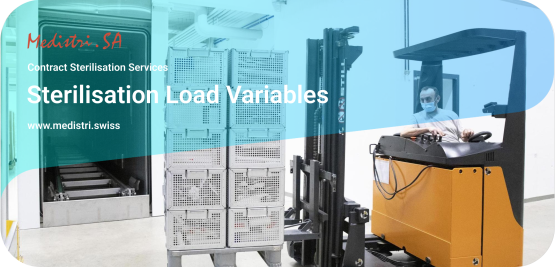(Download: EO Sterilisation Load Variables in PDF by Medistri)
At Medistri, we believe in delivering the highest quality services to our customers. In the sterilisation process of medical devices using ethylene oxide (EO), it is important to carefully consider several variables to ensure that the process is effective.
The load is homogenous and fill the usable volume of the EO sterilisation hamber, entering the process at consistent environmental conditions. During the process, the temperature rise of the load is predictable and the gas consumption is consistent. Each part of the load is exposed to the process gases at a predictable rate, with total penetration achieved to deliver the same concentration of gases to every area.
For medical device manufacturers, it is not always simple to obtain perfect conditions due to the variety of products that manufacturers produce, ranging from simple single-material components to complex devices with multiple materials and packaged in different ways for multiple markets. It is also possible for the loads sterilized with EO to contain a mix of products with different densities, volumes, and materials. To ensure that the process is effective every time, it is important to carefully consider the mix of products used for validation.
👉 The ANSI/AAMI/ISO 11135-1:2014 standard addresses varying load configurations, stating that it is important to verify the load configuration because different materials may not behave similarly when heated during the preconditioning and conditioning stages of the process. When evaluating varying loads, a worst-case reference load should be defined and all relevant factors should be considered, including ethylene oxide absorbency, tortuous pathways, and thermodynamic profiles.
It can be challenging to determine the impact of EO absorbency on the process and its potential to deplete the process gases during the exposure phase. Tortuous pathways and thermodynamic profiles can be examined physically during the validation process. However, there is limited guidance on material absorbency rates and no industry-wide instrumentation for analyzing these rates. Absorbency has been linked to load density, with the assumption that denser loads will absorb more EO and may be more difficult to heat, making them a worst-case scenario.
✔ When mixing densities within the same EO sterilisation load, it is important to ensure that higher density products do not consume the available process gases at a rate that deprives lower density products of the necessary time and concentration for effective sterilization. At Medistri, we have control systems in place to minimise the impact of nonuniform and varying product loads.
It is essential to carefully consider various variables when assuring the effectiveness of the EO sterilization process for medical devices. By following industry standards and using modern EO Sterilisation infrastructure with control systems in place, we can ensure that our products meet the highest standards of quality and safety for our customers.
🎯 To learn more about Medistri’s EO Sterilisation Contract Services, visit on our website at www.medistri.swiss or directly contact our team at [email protected].
- The Medistri Team
